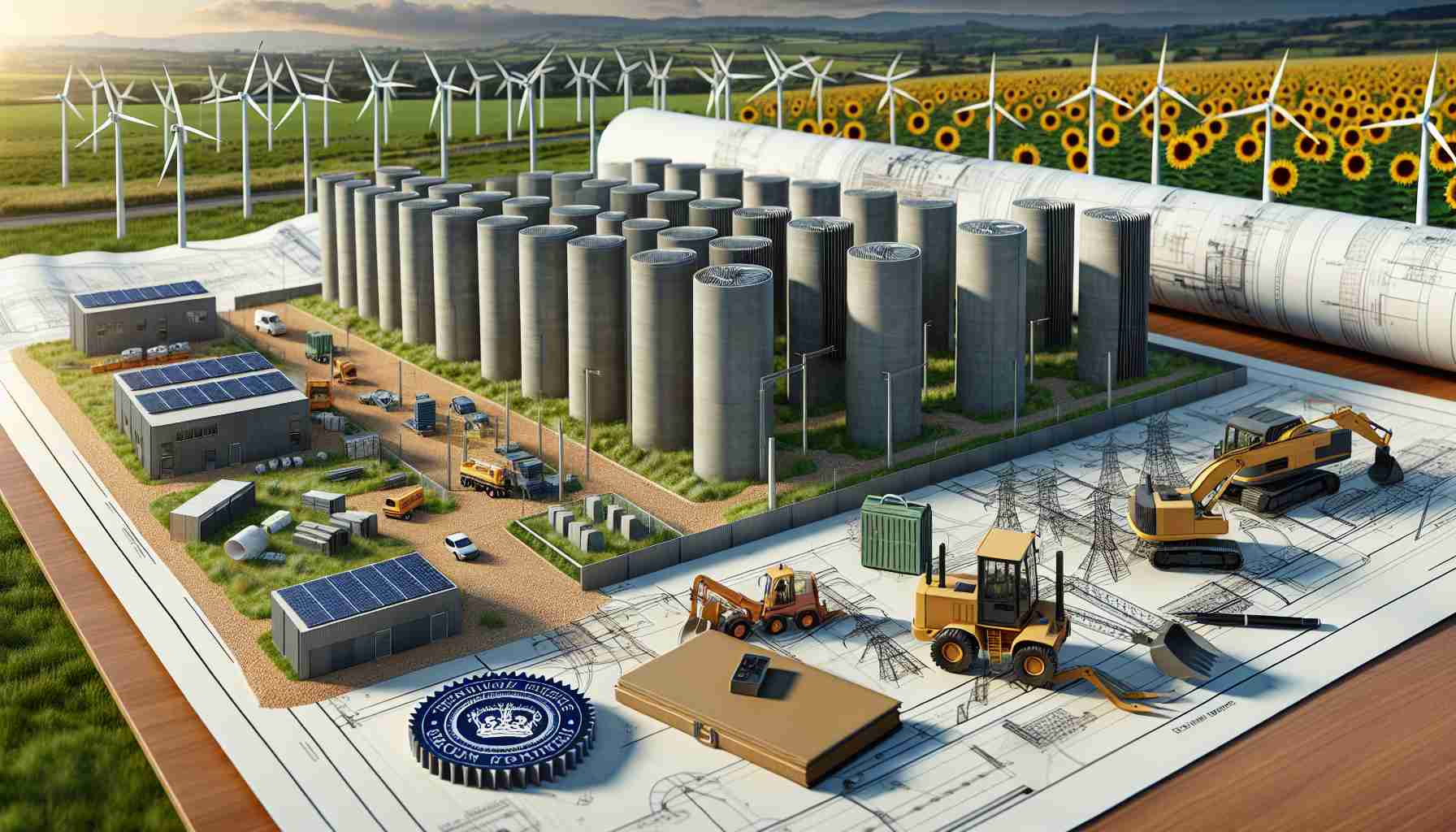A new renewable energy storage project in Cheadle, England has been granted planning approval, marking a significant step towards a sustainable energy future. The project, developed by Balance Power, aims to store renewable energy during times of peak generation and release it back onto the grid to meet high demand.
By addressing the intermittency issues of renewable energy sources, this storage facility will play a pivotal role in balancing the local energy grid. The Cheadle Battery Energy Storage project is expected to become operational in 2028, with construction set to commence as early as 2026. It will be located near the Hillside Industrial Estate and will connect to the Forsbrook Bulk Supply Point.
Aside from its contribution to grid stability, the project will assist the Staffordshire Moorlands District Council in achieving its renewable energy targets. Moreover, it will ensure a reliable energy supply to the local network during times when renewable energy sources are unreliable.
One of the notable benefits of this project is its positive impact on the environment. It is estimated to reduce the carbon footprint by a substantial 5,000 tonnes per year. Furthermore, the Balance Power Company claims that it will deliver a biodiversity net gain of over 60% in habitats and almost 20% in hedgerows.
The approval for this project came after Balance Power conducted thorough community engagement, with no objections raised. It is a testament to the growing recognition and acceptance of renewable energy projects in local communities. Importantly, once the project completes its 40-year lifecycle, the site will be decommissioned and restored to its former state.
While the Cheadle Battery Energy Storage project represents progress towards a greener future, it is worth noting that similar endeavors are also underway elsewhere in the United Kingdom. The Halliburton Battery Energy Storage project in Coupar Angus and the Newburn Battery Energy Storage project in Lemington Road are both aiding local authorities in meeting renewable energy targets and ensuring a stable energy supply.
With each new project, the United Kingdom takes another step in the right direction, demonstrating its commitment to reducing carbon emissions and building a sustainable energy landscape for future generations.
Frequently Asked Questions (FAQ) – Cheadle Battery Energy Storage Project
1. What is the Cheadle Battery Energy Storage project?
The Cheadle Battery Energy Storage project is a renewable energy storage facility located in Cheadle, England. Developed by Balance Power, its goal is to store renewable energy during times of peak generation and release it back onto the grid to meet high demand.
2. When will the Cheadle Battery Energy Storage project become operational?
The project is expected to become operational in 2028, with construction set to begin in 2026.
3. Where will the project be located?
The storage facility will be near the Hillside Industrial Estate and will connect to the Forsbrook Bulk Supply Point.
4. How will the project contribute to grid stability and local energy targets?
By addressing the intermittency issues of renewable energy sources, the Cheadle Battery Energy Storage project will play a pivotal role in balancing the local energy grid. It will also assist the Staffordshire Moorlands District Council in achieving its renewable energy targets.
5. What environmental benefits will the project provide?
The project is estimated to reduce the carbon footprint by 5,000 tonnes per year. Additionally, the Balance Power company claims that it will deliver a net gain of over 60% in habitats and almost 20% in hedgerows, benefiting biodiversity.
6. How was community engagement conducted for the project?
Balance Power conducted thorough community engagement, and no objections were raised from the community. The project’s approval reflects the growing recognition and acceptance of renewable energy projects in local communities.
7. What will happen after the 40-year lifecycle of the project?
Once the project completes its 40-year lifecycle, the site will be decommissioned and restored to its former state.
Key Definitions:
Renewable energy storage project – A project that aims to store energy generated from renewable sources during times of peak generation and release it back onto the grid when there is high demand.
Intermittency – The unpredictable and fluctuating nature of renewable energy sources, which can cause irregular supply to the grid.
Carbon footprint – The total greenhouse gas emissions produced by an individual, organization, or project, expressed in equivalent metric tons of carbon dioxide.
Biodiversity net gain – A measurement of the overall increase in biodiversity resulting from a project or development, taking into account any potential losses and compensatory measures.
Bulk Supply Point – A connection point between a high-voltage electricity transmission network and lower voltage distribution networks.
Suggested Related Links:
1. Balance Power Company – Official website of Balance Power, the developer of the Cheadle Battery Energy Storage project.
2. Staffordshire Moorlands District Council – Official website of the council involved in achieving renewable energy targets.
3. Office of Gas and Electricity Markets (Ofgem) – Official regulator of the electricity and gas markets in the United Kingdom, providing information on renewable energy initiatives.
The source of the article is from the blog regiozottegem.be
